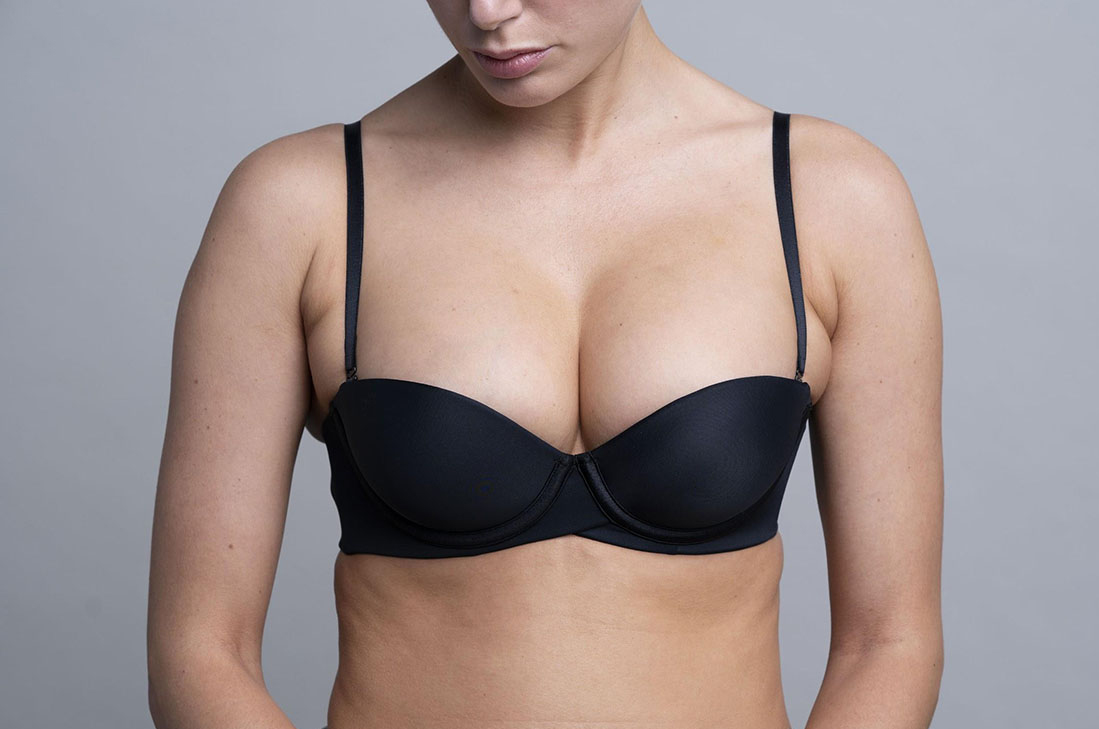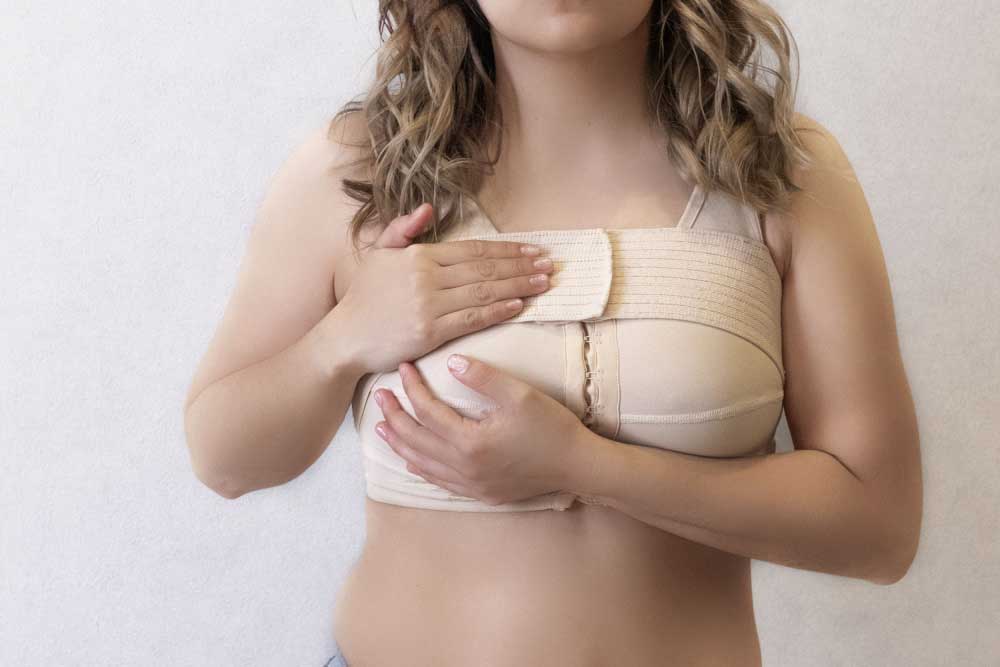Losing weight can be a rewarding achievement, but it often comes with changes to your body, including decreased breast size. Many women seek ways to regain their breast fullness after significant weight loss. In this guide, we will share effective strategies to enhance breast appearance naturally and through medical interventions. From exercises that strengthen the chest muscles to dietary adjustments and cosmetic options, we’ll cover a range of methods to help you feel confident and satisfied with your body’s appearance post-weight loss.

Contents
How To Get Breasts Back After Weight Loss?
Regaining breast fullness after weight loss can be challenging, as breasts can lose volume and elasticity when you shed pounds. This occurs because breasts primarily consist of fatty tissue, and losing fat throughout the body affects this area as well. Here are some practical ways to help regain breast fullness and improve overall breast appearance after weight loss:
1. Strength Training:
Focusing on exercises that strengthen the pectoral muscles under the breasts can help lift and give the breasts a more full appearance. Exercises such as push-ups, chest presses, and dumbbell flyes are beneficial.
2. Dietary Adjustments:
Ensuring that your diet includes enough proteins, healthy fats, and vitamins can help maintain skin elasticity and promote muscle growth. Foods rich in healthy fats like avocados, nuts, and olive oil can be particularly helpful, as well as those high in antioxidants like berries and green vegetables to support skin health.
3. Breast Massage:
Regular breast massage can increase blood flow and stimulate collagen production, which may help enhance the appearance and elasticity of the breast skin. Use natural oils like almond or coconut oil to moisturize and firm up the skin during the massage.
4. Proper Supportive Wear:
Wearing a well-fitted, supportive bra can help shape your breasts and prevent further sagging. It’s important to get professionally measured for a bra post-weight loss to ensure you are wearing the right size.
5. Hydration:
Keeping the skin hydrated is crucial for maintaining its elasticity. Drinking plenty of water each day helps to keep your skin supple and can enhance the overall appearance of your breasts.
6. Supplements:
Certain dietary supplements like Vitamin C, Vitamin E, and collagen may help improve skin elasticity. However, it’s essential to consult with a healthcare provider before starting any new supplements.
7. Cosmetic Procedures:
If natural methods do not achieve the desired results, cosmetic procedures such as breast lifts or augmentations can be considered. A breast lift can remove excess skin and lift the breasts, while implants or fat transfer can add volume. These should be considered as last resorts and require consultation with a certified plastic surgeon.
8. Hormonal Balance:
Hormonal imbalances can also affect breast size. Discuss with a healthcare provider if hormonal therapy is appropriate for you, especially if your weight loss has affected your hormone levels.
Do I Have To Have Surgery On My Breasts After Significant Weight Loss?
No, you don’t necessarily need surgery on your breasts after significant weight loss. There are several factors to consider, and the decision ultimately depends on your desired outcome and comfort level. Here’s a breakdown to help you decide:

Factors to Consider:
-
Severity of Volume Loss: The amount of breast tissue lost due to weight loss plays a significant role. If the volume loss is mild, you might be happy with non-surgical methods to improve appearance.
-
Skin Elasticity: The elasticity of your skin determines how well it bounces back after weight loss. Younger individuals with good skin elasticity might see more natural improvement compared to those with looser skin.
-
Desired Outcome: Are you looking to regain volume, improve shape, or simply address sagging? This will influence whether non-surgical methods or surgery are more suitable.
Non-Surgical Approaches:
These methods can be very effective, especially for mild to moderate cases of volume loss or sagging:
-
Supportive Bra: A well-fitting bra that lifts and shapes the breasts can make a noticeable difference.
-
Strength Training: Building chest muscles can create a lifting effect and improve overall definition.
-
Moisturizing: Keeping the skin hydrated can improve elasticity and make the breasts appear fuller.
-
Healthy Weight Management: Maintaining a stable weight is crucial to prevent further sagging.
Surgical Options:
These procedures are suitable for those seeking more dramatic results or who have significant sagging:
-
Breast Implants: Implants are inserted to increase volume and improve shape.
-
Breast Lift (Mastopexy): Excess skin is removed, and remaining tissue is tightened for a lifted appearance. This may be combined with implants for volume.
Is Breast Augmentation Surgery Right For Me?
Deciding whether breast augmentation surgery is right for you involves careful consideration of several factors, including your health, expectations, and reasons for wanting the surgery. Here are key points to consider to help determine if breast augmentation is a suitable choice for you:

1. Health Status:
Good candidates for breast augmentation are generally in good health and do not have active diseases or serious, pre-existing medical conditions. Chronic illnesses, such as diabetes or heart disease, may increase the risk of complications. It’s essential to discuss your full medical history with a plastic surgeon to assess your suitability for surgery.
2. Psychological Readiness:
Consider your emotional state and motivations. Breast augmentation should be something you do for yourself, not to fit someone else’s ideals. It’s important to have realistic expectations about the results. Consulting with a mental health professional can provide clarity and support in making a decision that’s right for you.
3. Financial Considerations:
Breast augmentation involves significant costs, including the surgeon’s fee, anesthesia, hospital facilities, and post-surgery care. Most medical insurance plans do not cover cosmetic surgery, so you need to be prepared for the financial commitment, including potential future surgeries for maintenance or complications.
4. Know the Risks:
Like any surgery, breast augmentation carries risks. These can include infection, changes in nipple or breast sensation, implant leakage or rupture, and the need for additional surgeries. Thoroughly knowing these risks and discussing them with your surgeon is crucial.
5. Lifestyle Considerations:
Consider how the surgery might impact your lifestyle. Recovery from breast augmentation can take several weeks, during which strenuous activities must be limited. Also, consider long-term impacts, such as the need for implant replacements or adjustments over time.
6. The Consultation:
A consultation with a board-certified plastic surgeon is essential. During this meeting, discuss your goals, concerns, and the different types of implants (silicone vs. saline, shaped vs. round, etc.), as well as surgical techniques. A skilled surgeon can help guide your decision based on your body type and aesthetic goals.
7. Long-term Commitment:
Breast implants are not lifetime devices. They may require replacement or revision surgery in the future. Being prepared for the possibility of future surgeries to maintain the appearance of your breasts is important.
Frequently Asked Questions
Can losing weight impact breast size or shape?
Yes, weight loss can indeed alter both the size and shape of your breasts. Because a substantial portion of breast tissue consists of fat, losing weight—particularly, in large amounts—can naturally lead to a decrease in your cup size.
What non-surgical options exist to address sagging breast post weight loss?
Several non-surgical approaches, including exercise and Radiofrequency Therapy, can help improve the sagging. Of these, the laser breast lift, which employs techniques such as the Fotona SP Dynamis laser, is known for its effectiveness in lifting the breast tissue.
Is it possible to make saggy breasts firm again?
Through surgical interventions like mastopexy, sagging breasts can regain their youthful firmness. However, more traditional, non-invasive methods such as exercise, dieting, and topical creams typically yield insufficient results.
Can breast muscle be rebuilt?
Although breasts themselves don’t contain muscle, autologous tissue reconstruction—a process that uses a flap of tissue from your body comprising skin, fat, blood vessels, and sometimes muscle—can help rebuild the breast.

Santhan, known to many as Linda, combines her personal training expertise with exceptional motivational coaching skills. Her articles are not just informative but also incredibly inspiring, encouraging readers to take action and pursue their fitness goals. Linda’s unique approach to writing integrates practical fitness guidance with motivational elements, making her content both useful and uplifting.
